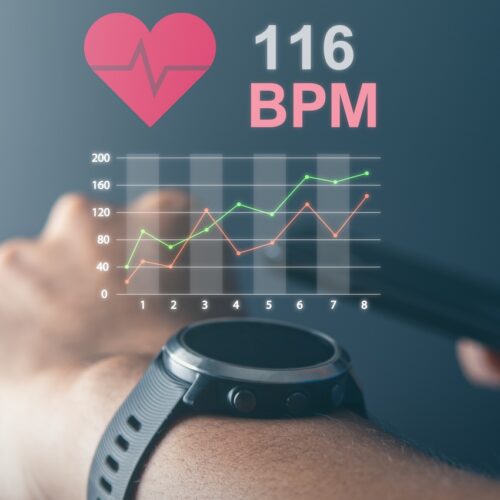Everywhere you look, there’s a number trying to define your health: steps, calories, HRV, VO₂ max, BMI, body fat. With the rise of wearables, we’ve never had more data at our fingertips.
The reality behind many of these metrics is that they are only meaningful if you know what they’re telling you, and more importantly, how to apply them. Otherwise, they can cause confusion, obsession, and lead you to chase numbers that don’t reflect the bigger picture.
We’ve seen this time and time again at Coya, so consider this your guide to understanding and applying key wearable metrics.
Key Metrics to Know (and How to Use Them)
HRV (Heart Rate Variability)
- What it is: Variation in time between heartbeats—an indicator of how well your nervous system adapts to stress.
- Optimal: While HRV is highly individual, generally higher = better. HRV will naturally fluctuate, so focus on trends and baseline improvements, not single-day dips.
- Improve it: Prioritize sleep (quality, quantity, and consistency), proactive stress management, sunlight, nutrition (quality and timing), hydration, and physical activity.
Resting Heart Rate
- What it is: Heart beats per minute at rest, reflecting cardiovascular efficiency.
- Optimal: ~60 bpm or lower. Elite endurance athletes may be in their 40s. Optimal depends on many factors, such as age, gender, and genetics.
- Improve it: Aerobic training, restorative sleep, and stress management.
Respiratory Rate
- What it is: Breaths per minute at rest.
- Optimal: 12–17 bpm. Higher rates may signal stress, illness, or low fitness.
- Improve it: Practice nasal breathing and build aerobic capacity (through aerobic or Zone 2 training).
Calories Burned (BMR + Activity)
- What it is: BMR or basal metabolic rate = calories burned at rest; activity calories = movement on top. Together, they shape overall energy expenditure.
- Why it matters: Helps you track and measure energy expenditure so you can align nutrition with your energy output.
Sleep Metrics
- Sleep efficiency: % of time asleep while in bed. Being in bed 8 hours doesn’t mean you slept 8 hours. A sleep efficiency of 90% or higher is generally considered optimal.
- Restorative sleep: The amount of deep (slow-wave sleep) and REM (rapid eye movement) sleep that supports recovery and cognition. A restorative sleep percentage of 40-50% is considered optimal.
- Sleep latency: The amount of time it takes to fall asleep. Ideally you should fall asleep within 10-20 minutes of lying down. Falling asleep too quickly (within 5 minutes) can be a sign of overtiredness.
- Sleep consistency: The regularity and predictability of your sleep schedule. It involves maintaining consistent bedtimes and wake times (+/- 15-30 minutes), even on weekends or days off.
The Bigger Picture
We’ve coached members with “perfect” metrics who didn’t perform optimally, and others with average numbers who thrive. This is because metrics don’t capture everything. Data is a tool, not the rule.
Subjective data—energy, mood, clarity, motivation—matters just as much. Numbers should support your story, not dictate it.
It can spot trends, validate progress, and help guide better choices. But the ultimate measure is how you live, move, and feel each day.








